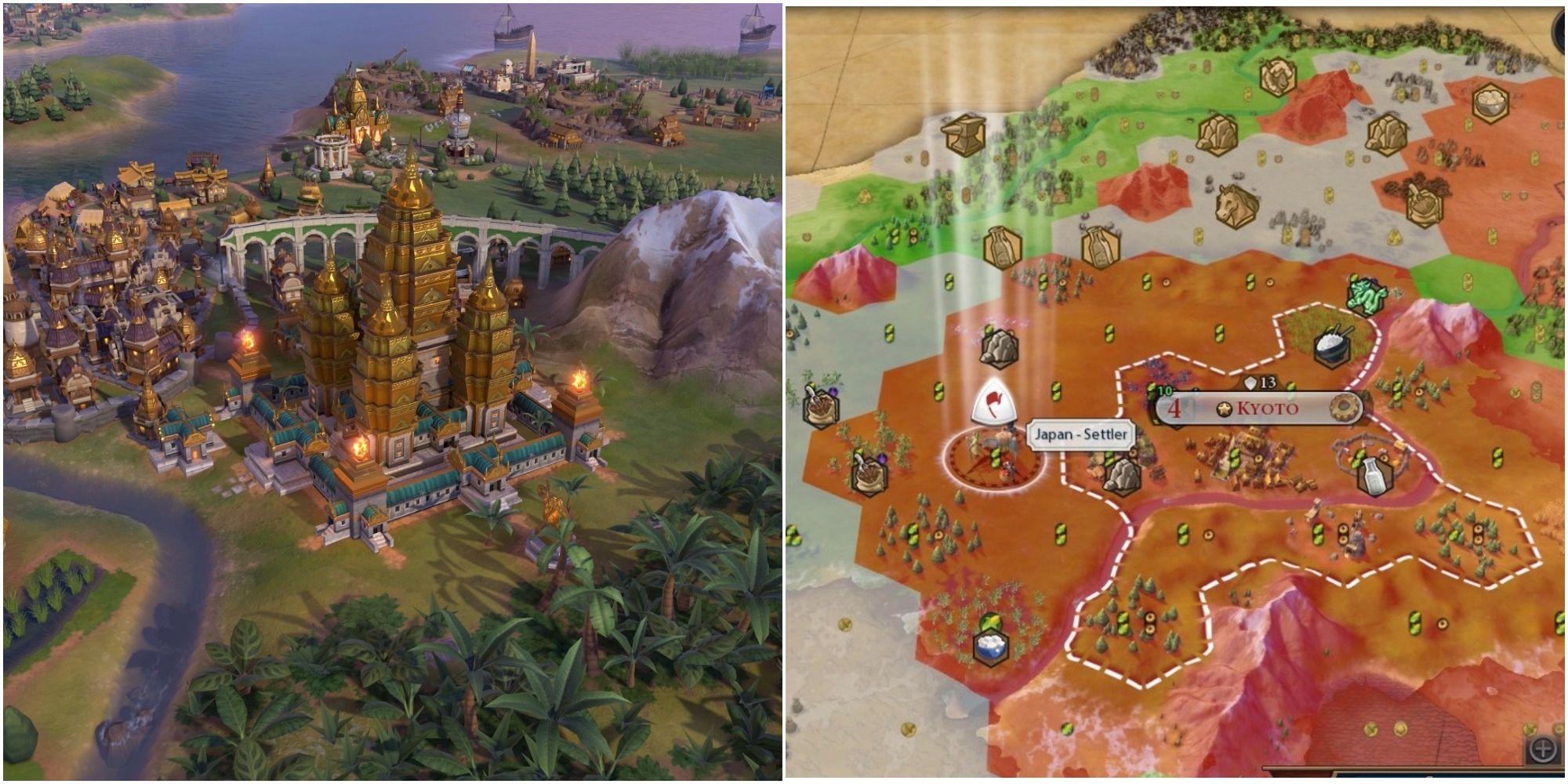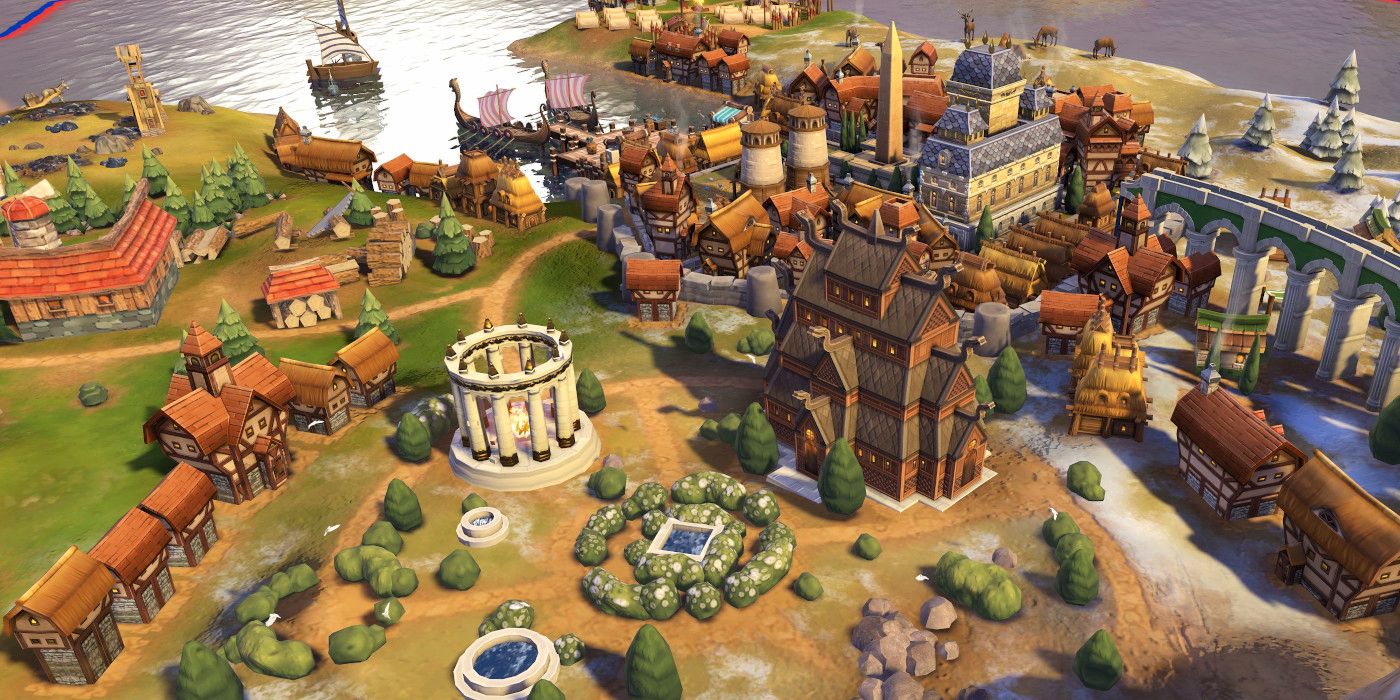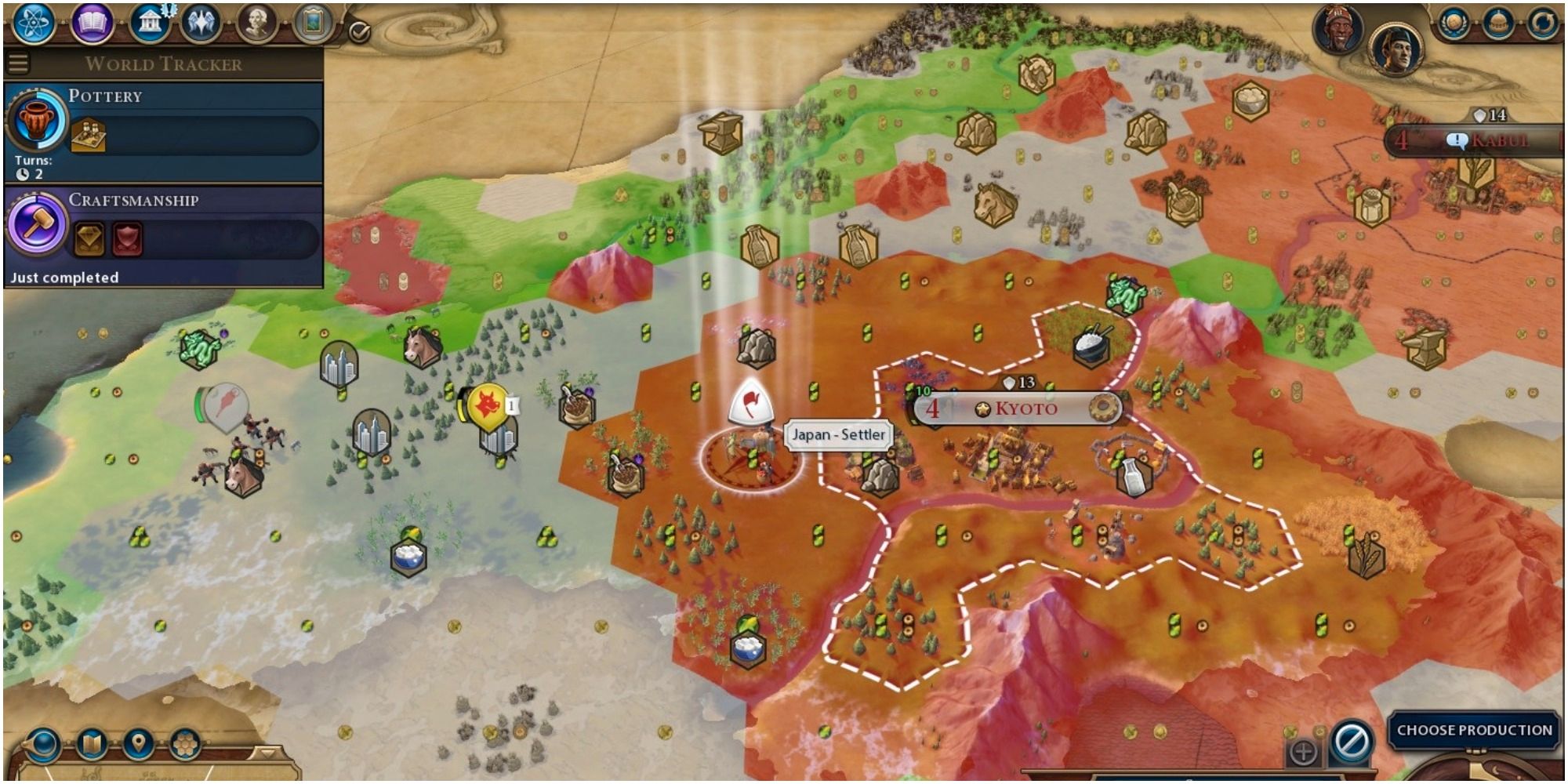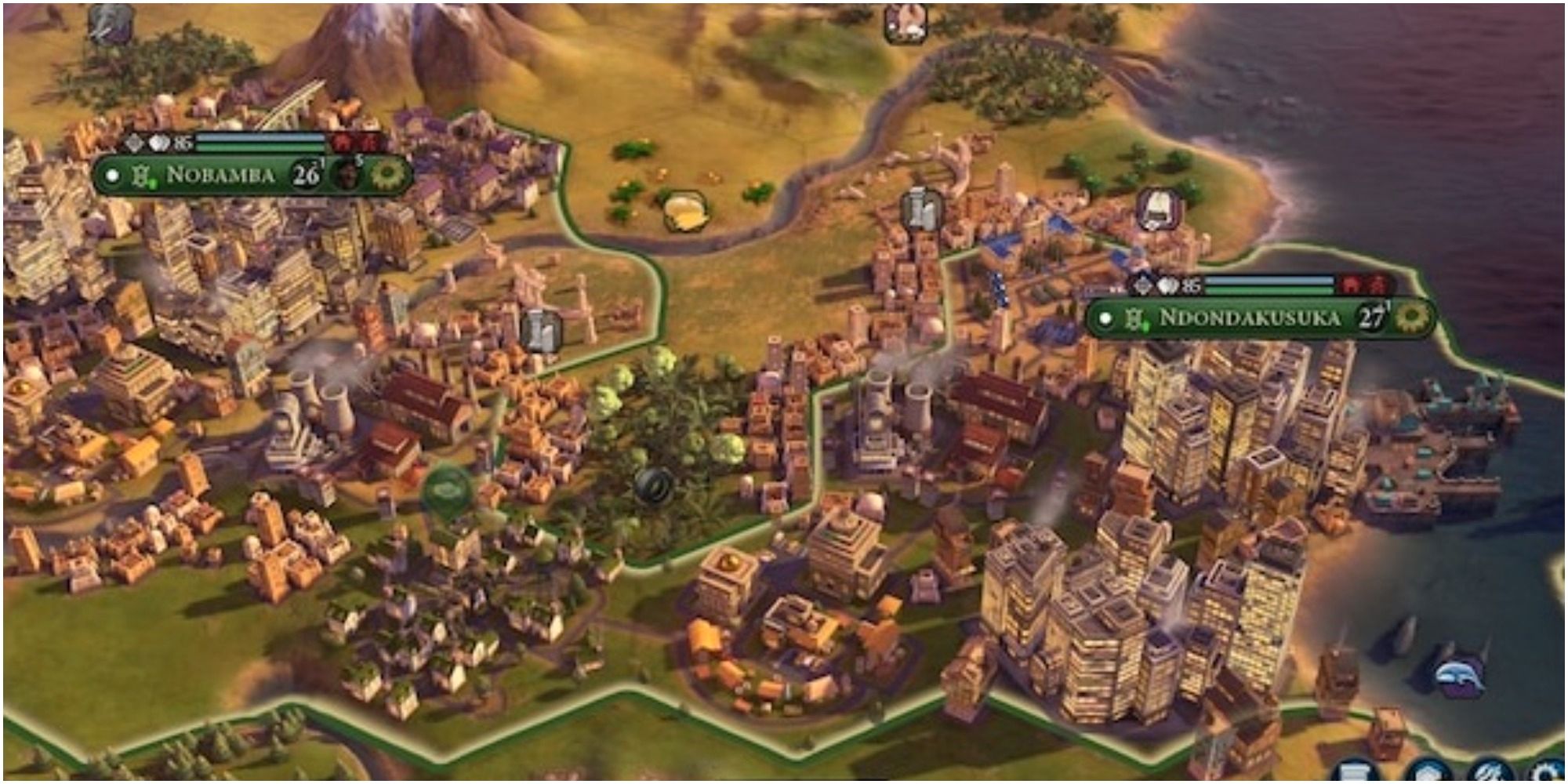
Back in some of the earlier versions of the Civilization series, it was entirely possible to win the game with a single city. Many players think fondly upon the days when players could select France and just start cranking out wonders. Unfortunately for the days of nostalgia, the world is a different place now (unless using a solid mod to bring back the glory days). Unless turning the difficulty all the way down and/or playing on a custom map, expansion is a critical component of even the most conservative strategy.
RELATED: Civilization 6: How To Get & Use The Giant Death Robot
Expanding one's empire, either by settling new cities or taking them, is extremely important in Civilization 6, and indeed players should be continually looking to grow. While this is a concept that will be well understood by many fans, some players may still be curious about the distances that they should be leaving between their cities in Civilization 6. Shining some light on this matter is the exact purpose of this guide.
Updated on August 3rd, 2021 by Hodey Johns: Fans are still playing Civilization 6 and who can blame them? The game receives constant DLC, expansions, balances, and patches, making even the single-player campaigns as fresh as can be. Strategists have been flocking to this guide, which was in an outdated format that has been cleaned up for better readability. Also, while there is a general answer to this question, there are times when exceptions to this rule must be made. A section has been added at the end of this guide to help players notice moments when they have to break the pattern.

In general, it is recommended that players settle their cities quite close to one another in Civilization 6, and four tiles in between City Centers is a reasonable rule of thumb. Of course, if a settler is able to access tiles with better yields or adjacency bonuses by moving another tile or two out then they should not be afraid to do so, but staying close to the minimum spacing for City Center is advisable.
RELATED: Civilization 6: Tips For Avoiding Warmonger Penalties
There are several reasons why keeping cities close in Civ 6 is preferable, and many of them stem from something that has been alluded to previously. Specifically, it is much better to go wide and build many smaller cities than to try to go tall with just a handful of high-population cities. This means that players will need space for all of their additional cities in Civilization 6, and building them close to one another is a way to preserve that space.

Additionally, building cities close together means that more of them will receive the benefits from constructions like Civilization 6's Colosseum and Factory. It also allows cities to share adjacency bonuses more readily, as, for example, a Wonder constructed in one city will pass along its bonus to a Theater Square in another if the two buildings are next to one another. This can certainly be achieved if cities are slightly farther apart, but it will take longer to access tiles that are adjacent across distant cities without paying for them.
One final thing to say about the distance of cities is that some Civilization 6 players may be tempted to place them far apart so that they do not have to share any of their workable tiles. However, since it is better to have many small cities in Civ 6, most of them will never have populations that need to work a full third ring once it has been obtained. Furthermore, players can always swap shared tiles if they find that one of their larger cities is in need of more tiles to work.

Of course, any player that follows this advice without exception will probably put themselves in a lot of danger. Gamers who follow a formula are no different than bots that follow programming. For those who prefer to do more than get lucky, there are a few times to keep in mind where ignoring the four tile rule is just fine.
RELATED: Civilization 6: Map Seeds You Need To Try
Keep an eye on the food in the surrounding area as this will directly impact the population of the city. If the food nearby is low, make it three tiles instead of four. If the food in the area is bountiful, make it five tiles. The goal is to have the citizens working as many tiles as possible without overlapping citizens from other cities.
If tactical resources are abundant in a consolidated area, feel free to build the cities closer together. Not having the population able to gather from every major resource is a serious miss. Even if the player's civilization doesn't need the goods, they can be traded away for other goods, money, or alliances. If there aren't enough resources, like when close by a Tundra area, do not build a city in that direction (with the possible exception of playing as Russia attempting to secure a religious victory). Cities cost money to maintain and building cities that take more upkeep than they bring in is a sure-fire way to throw the game.

While it's obvious that players will have to build more than four tiles away when making a city, it's a solid idea to build a city on an island in the middle of an ocean. These cities are advantageous for domination victories and relatively easy to defend. Plus, being able to make ships where they need to be made gives leaders control of the entire ocean.
Finally, always be sure to keep in mind any benefit from the civilization that is selected. For example, when playing as the Khmer, there's a bonus to build next to rivers. If this means building a little bit closer or further than four tiles, always play to the civilization's strengths; forfeiting this advantage is forfeiting the game.
MORE: Civilization 6: How To Get The Most Out Of Vampire Castles

